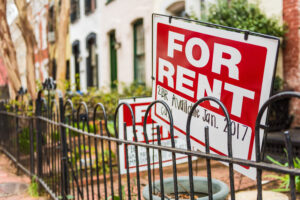It’s frustrating when tenants decide to stop paying their rent. You’ve already gone through the leasing process with them, and now you’re going to have to do it all over again! Rather than giving your late tenants an earful, start the eviction process right away. The sooner you get them out, the closer you’ll get to finding the perfect tenants for your property.
Step 1: Give Notice
Of course, every situation is different and many handle it differently. While I don’t recommend this, some landlords try to strike a deal with their tenants, requiring them to pay back the rent in installments by a certain date and so forth. If you decide to go this route, be sure that you have everything in writing. This will legally bind you and your tenant to the agreement. If your tenant still does not pay back the rent by the agreed upon time, you’re back at square one: handing out a three-day-notice to pay or quit.
Generally, in the notice you’ll need to include your name, the address where the tenant can deliver the rent, your office hours and a phone number. You’ll also need to personally deliver the notice, but if your tenants aren’t home you can serve the three-day notice by taping it to their door and mailing it to the tenant. Keep the return receipt when you mail the notice. Be sure to review your state’s landlord-tenant laws closely when assembling this form and proceeding with the unlawful detainer action.
Step 2: File an Unlawful Detainer (or Eviction) Action
After the notice period is up, start compiling the documents you’ll need to file an eviction complaint. Most likely you’ll need your housing license or proof of ownership, the lease, and proof that the three-day-notice was delivered (the return receipt). Bring cash or checks so that you can pay the legal fees. Reviewing your landlord-tenant laws and calling your local landlord/tenant court to ask what documents will be needed to file the eviction will help.
If you don’t want to go through filling the unlawful detainer action yourself, there are plenty of hirable services that will do this for you. Your local apartment association should be able to refer you to one.
Step 3: The Judgement
After your eviction action is filed, your tenants will be served notice of the scheduled eviction hearing date. Be aware that this might take some time, and during this time your tenants will most likely not be paying for their rent. When you win the judgement against them, you’ll need to have the local sheriff remove the tenants and seize their belongings. Once they are out, the property is yours again!
As you know, the eviction process is not so simple. There’s a lot of waiting involved, and during that time you’ll have to deal with your unpaying tenants. No matter what happens, do not threaten them (both verbally and in writing), change the locks, or shut off the utilities. During this time it can be easy to get caught up in the moment, but once you follow these steps and win judgement against your tenants, you’ll be able to reap the benefits of your property again.
Have you had to deal with a tenant that refused to pay their rent? How did you resolve the issue? Let us know your experiences in the comments section below & be sure to subscribe!








5 Replies to “What to Do When Your Tenant Stops Paying their Rent”
NYC Brownstone neighbor paid first months rent ($9,000) plus last month rent ($9,000) plus security deposit ($9,000). That was the last monies the landlord saw. It took them 14 months to have them evicted. Landlord was down and out $99,000 in lost rent plus $20,000 in legal fees. NYC is very very slow to evict.
That’s an extremely long time! Thank you for sharing your experience. Do you or the landlord you know use any measures to try to prevent having to go through an eviction?
I admire your work , regards for all the useful blog posts.